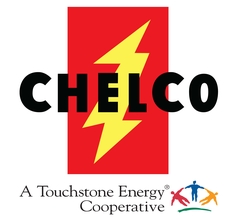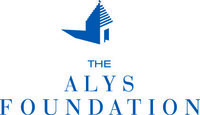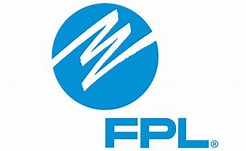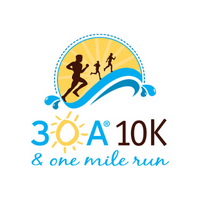Offering student-designed, project-based opportunities to expand traditional learning
- School:
- Freeport High School
- Subject:
- Career/Technical Education
- Teacher:
- Julia Terrell
- Students Impacted:
- 120
- Grade:
- 9-12
- Date:
- October 9, 2023
Investor
Thank you to the following investor for funding this grant.
The St. Joe Community Foundation - $999.55
Original Grant Overview
Goal
Over the last 4 years, our Agritechnology Program has developed an outdoor classroom using a traditional garden setting that has 5 raised beds and a small greenhouse which are used to grow a variety of vegetables, herbs, and flowers. This garden area allows students to take their traditional learning outside to the garden and learn about the Vegetable and Nursery Industries as they work towards career and technical certifications in these fields. After four years, we now have a diverse group of students using these resources, from first year students to fourth year students. As students work in the garden, they are restricted to what other classes have done in years past. The basics are there, but as their knowledge grows, they recognize that there are ways to improve the efficiency of their time, our space, and the production of the garden. The ability to improve the garden systems (irrigation, space, aesthetics, and even our enjoyment of the garden) results in this request for funding.
What will be done with my students
Students will ultimately decide on projects to incorporate the materials provided with this grant, but they will include projects that will provide solutions to irrigation issues, increasing the growing areas of each raised bed, designing and installing a landscaping plant trail, installing a canopy for the outdoor classroom area, and to use left over supplies for creative seating areas within the garden and along the landscaping plant trail.
Some possible project that students are interested in are as follows:
1) Students will use materials to develop additional, more water-efficient irrigation option for each raised bed, and to repair irrigation in the green-house.
2) Also, the growing beds are full of crops from four classes. Students will use the rolled fencing to expand the growing area of the raised beds by adding vertical growing areas to the beds using the fences as trellis.
3) Students must learn about various landscaping plants. We used funding from a different grant to purchase landscaping plants that they needed to be able to identify. Students will design a “path” or “trail” to put these plants along. Supplies from this grant will be used to incorporate signage for each plant (4X4 posts).
4) Students will design and build seating that can be places along the trail and within the garden area using left over cinder blocks and supplies from this grant (4X4 posts and liquid nail adhesive).
5) Outside shade cloths and tables/benches were purchased from a different grant, however, the installation of the shade cloths within the new trail and garden need to be installed. Funding from this grant will provide the 4X4 posts and QuickC rete needed to install and incorporate these items within the outdoor classroom area.
As students work in the garden, problems arise. Students work to fix, repair, or just develop a new way to get things accomplished. The funding from this grant will give students access to supplies to use within the garden to enhance and expand the capabilities of the harvest within this garden area.
Benefits to my students
Students will not only learn the needed curriculum to be successful in class and earn CTE certifications via hands-on projects, but students will also learn needed career skills as they work on these projects. As students design, build, and install these projects in their garden area, they will be working in small groups. In these small groups, students will learn to work with others, develop leadership roles and listening skills, take on responsibilities, learn to think out-side the box, how to over-come issues that develop, and ultimately, how to finish tasks assigned. We all know that things just don't always work out as we thought they would. Students will learn to overcome and adjust as they design and build these projects. This arguably is the most valuable part of these projects. These skills are needed to be employable and productive workforce members.
Budget Narrative
All supplies will be purchased at Lowe’s in DeFuniak Springs. Supplies purchased will include a variety of PVC piping and accessories (elbows, tees, couplers, etc.), fencing and trellises to increase the growing area of the raised beds, and building supplies for canopies, seating, and trail signs. The total funding request is $999.55.
Items
| # | Item | Cost |
|---|---|---|
| 1 | 4X4 16' #2 treated posts | $209.92 |
| 2 | 4X4 12' #2 posts | $92.60 |
| 3 | 4X4 8' #2 posts | $132.00 |
| 4 | Quickcrete - 50 lbs | $73.30 |
| 5 | Liquid Nail/Adhesive | $89.50 |
| 6 | Garden Craft 50' X 3' wire roll fencing | $45.38 |
| 7 | Trellis | $175.92 |
| 8 | Leather gloves | $22.40 |
| 9 | 1/2" PVC 10-ft' | $17.88 |
| 10 | 3/4" PVC 10-ft' | $25.16 |
| 11 | 1" PVC 10-ft' | $32.24 |
| 12 | PVC Elbows (1/2", 3/4", 1") | $14.85 |
| 13 | PVC Reducers 1" to 3/4 ", 1" to 1/2", 3/4" to 1/2" | $25.75 |
| 14 | PVC Caps (1", 1/2", 3/4") | $13.30 |
| 15 | PVC Tees (1", 1/2", 3/4") | $18.60 |
| 16 | PVC Couplers (1", 1/2", 3/4") | $10.75 |
| Total: | $999.55 |






Share
Please share this page to help in fulfilling this grant.
Email to a Friend